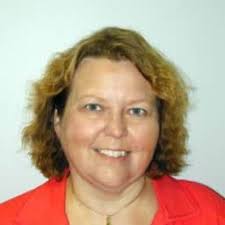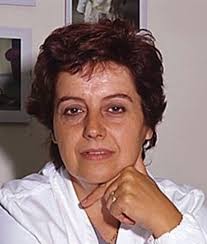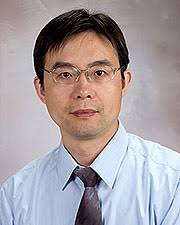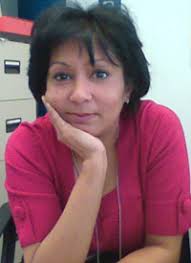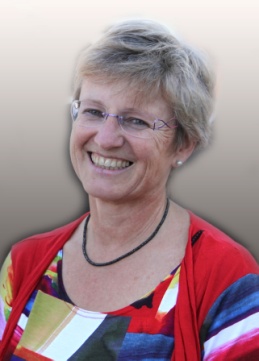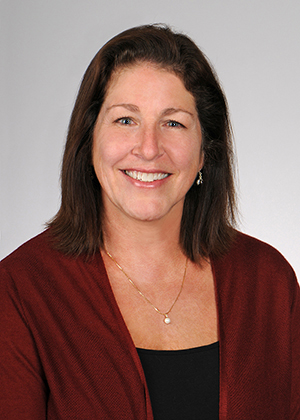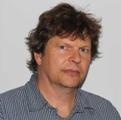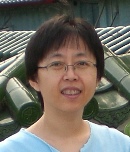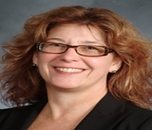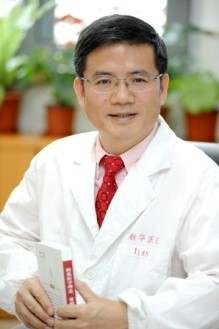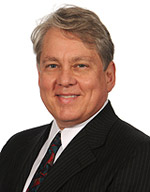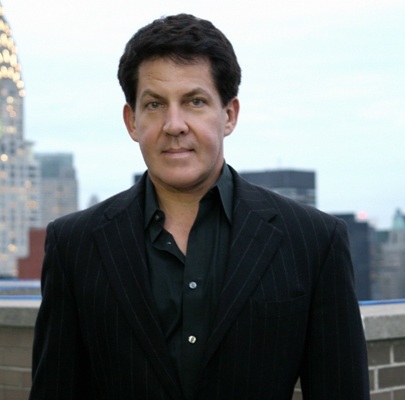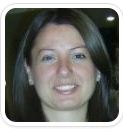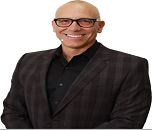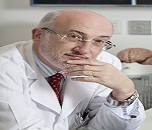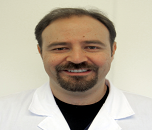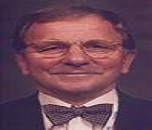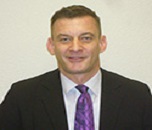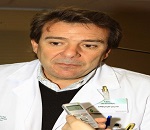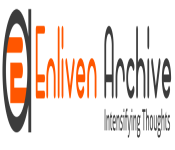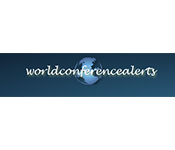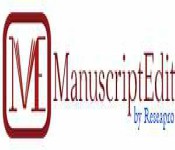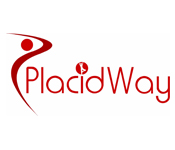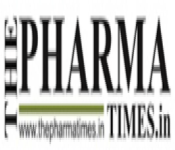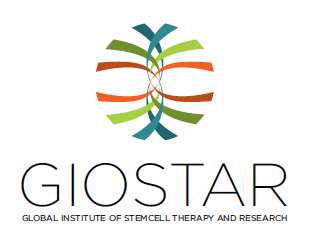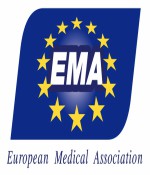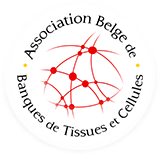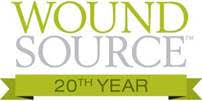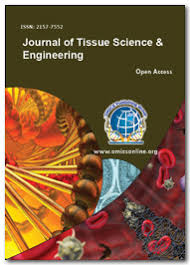Theme: Mounting Cavernously in the field of Tissue Repair and Regeneration
Tissue Repair 2018
ABOUT CONFERENCE:
10th International Tissue Repair and Regeneration Congress invites all the participants from all over the world to attend during June 13-14, 2019 in Helsinki, Finland, which includes prompt keynote presentations, Oral talks, and Poster presentations.
Tissues are defined as aggregations of similarly specialized cells which collectively function to connect, support or surround other structures and organs of the body. Tissues include tendons, ligaments, fascia, skin, fibrous tissues, fat, muscles, nerves and blood vessels. Stem cells are cells originate in all multi-cellular organisms. They were isolated in mice in 1981 and in humans in 1998. In humans, there are several types of stem cells, each with varying levels of potency. Stem cell treatments are a type of cell therapy that introduces new cells into adult bodies for possible treatment for sicknesses. Stem cells have been used to repair tissue damaged by disease.
WHY ATTEND?
10th International Tissue Repair and Regeneration Congress have the platform to fulfill the needs in the transformation of this science of hope, to serve promptly with solutions to all the needs. Tissue Repair 2019 will have participants across the world to discuss the Congress goal.
About Organizers
ME Conferences is one of the leading Open Access publishers and organizers of international scientific conferences and events every year across USA, Europe & Asia. Conference Series has so far organized 3000+ Global Events with over 600+ Conferences, 1200+ Symposiums and 1200+ Workshops on Medical, Pharma, Engineering, Science, Technology and Business with 700+ peer-reviewed open access journals in basic science, health, and technology.
Scientific Sessions
Tissue Repair 2019 will encompass recent researches and findings in Tissue Repair and Regeneration technologies, stem cell therapies and transplantations and other advancements in stem cell research and Tissue science. Tissue Repair 2019 will be a great platform for research scientists and young researchers to share their current findings in this field of applied science. The major scientific sessions in Tissue Repair 2019 will focus on the latest and exciting innovations in prominent areas of Tissue science and stem cell research.
Target Audience
- Gene Therapy Scientists
- Stem Cell Researchers
- Emeritus and Academic professors
- Cell Biologists
- Genetic scientist
- Molecular Biologists
- Regenerative Medicine researcher
- Business Entrepreneurs
- Drug Manufacturing Companies
- Stem cell Developers and Investigators
- Tissue Engineers
In Tissue Repair and Regeneration, Regenerative medicines play a major role. Regenerative medicines have the ability to repair, replace, and regenerate tissues and organs affected due to injury, disease. These medicines are capable of restoring the functionality of cells & tissues and are applicable in a wide range of degenerative disorders developing number of surgeries fueled by maturing populace and rising injury cases are expected to move request for s tissue repair gadgets and in turn give development openings for manufacturers. In expansion, the expanding number of items propelled and industry solidification are anticipated to fortify the tissue repair showcase over the estimate period. For occurrence, presentation of organic unites by driving producers is picking up clutch. Organic joins diminish the recuperation period and have less difficulty related to dismissal, which in turn is expected to boost request for these items over the estimate period. Developing number of patients enduring from sports related wounds is another calculate which is anticipated to advance tissue repair showcase development .Tissue Engineering is an inter corrective field that applies the principles of engineering and life sciences toward the development of biological substitutes that restore, maintain, or improve tissue function or a whole organ. Currently it has emerged as a rapidly diversifying field with the potential to address the worldwide organ shortage issue and comprises of tissue regeneration and organ replacement. The global tissue engineering and regeneration market reached $17 billion in 2013. This market is expected to grow to nearly $20.8 billion in 2014 and $56.9 billion in 2019, a compound annual growth rate (CAGR) of 22.3%. On the basis of geography, Europe hold the second place in the global market in the field of regenerative medicine & tissue engineering.
Importance & Scope:
A innovative set of tissue replacement parts and implementation strategies had shown a great uprising in Tissue engineering field. Cells placed on or within the tissue constructs is the most common methodology in tissue engineering. Regenerative medicine is not one discipline. It can be defined as a therapeutic intervention which “replaces or regenerates human cells, tissues or organs, to restore or establish normal function” and deploys small molecule drugs, biologics, medical devices and cell-based therapies. Regenerative Medicine-2015 is an captivated a locality of conscious discussions on novel subjects like Tissue Regeneration, Materials & Designs for Tissue Engineering, Stem Cell–Tools to Battle Cancer, Bioreactors in Tissue Engineering, Regeneration & Therapeutics, Cord Blood & Regenerative Medicine and Clinical Medicine. The two days event embeds a firm relation of upcoming strategies in the field of Tissue Repair & Regeneration with the scientific community. The theoretical and applicable knowledge shared, will also foster organizational collaborations to nurture scientific accelerations. We bring together business, creative, and technology leaders from the tissue engineering, marketing, and research industry for the most current and relevant.
Glimpse at Market of Regenerative Medicine:
There are strong pricing pressures from public healthcare payers globally as Governments try to reduce budget deficits. Regenerative medicine could possibly save public health bodies money by reducing the need for long-term care and reducing associated disorders, with potential benefits for the world economy as a whole. The global market for tissue engineering and regeneration products reached $55.9 billion in 2010, is expected to reach $59.8 billion by 2011, and will further grow to $89.7 billion by 2016 at a compounded annual growth rate (CAGR) of 8.4%. It grows to $135 billion to 2024.The contribution of the European region was 43.3% of the market in 2010, a value of $24.2 billion. The market is expected to reach $25.5 billion by 2011 and will further grow to $36.1 billion by 2016 at a CAGR of 7.2%. It grows to $65 billion to 2024.
The growing rate of Cell Therapy, TE, Gene Therapy and Small molecules over the Years:
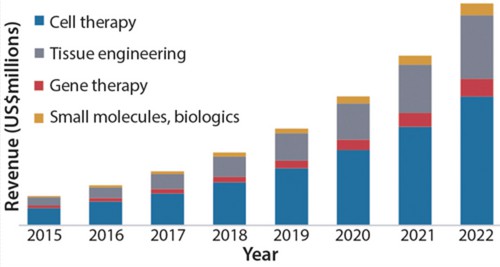
Global data about Stem cell therapy, TE and Gene Therapy:

Target Audience:
Industry 40%
Academia 50%
Others 10%
List of Major Tissue Science Society Worldwide:
USA $ AMERICA
- New York Stem Cell Foundation
- American Academy of Anti-Aging Medicine
- American College of Medical Genetics (ACMG)
- American Board of Medical Genetics (ABMG)
- American Society of Gene Therapy (ASGT)
- Canadian College of Medical Geneticists
- Canadian Collaborative Group for Cancer Genetics (CCGCG)
EUROPE
- European Society for Artificial Organs
- European Association of Tissue Banks
- Association of Genetic Nurses and Counsellors (AGNC), United Kingdom
- British Society for Human Genetics (BSHG)
- Clinical Molecular Genetics Society (CMGS), United Kingdom
ASIA PACIFIC $ MIDDLE EAST
Track 1-Tissue Repair and Regeneration
Tissue repair denotes to the spare of damaged tissue via dwelling tissue and contains two important components - Regeneration and restore. The differentiation between the two is based totally at the resultant tissue. In Regeneration, specialized tissues are replaced by the proliferation of surrounding undamaged specialized cells. In repair, misplaced tissue is replaced by granulation tissue which matures to form scar tissue. Cells are constantly dying to be able to keep us alive. The stomach creates a new lining every five days(If the stomach linings will not changed into new usually then, hydrochloric acid from the stomach juices would burn a hole inside the stomach, which might soon purpose death). Skin replaces itself every 30 days. The red blood cells have an existence span of one hundred twenty days, and must then be replaced. Each of the distinctive tissues of the frame has its personal natural lifestyles cycle. it's far the goal of regeneration remedy to stimulate the process of self-renewal.
Track 2-Stem cell in Tissue Repair
Stem cells are defined as being clonogenic, having self-renewal capacity throughout the lifetime and giving rise to terminally differentiated cells of various cell lineages. Their differentiation pathway is unidirectional, passing through the stage of lineage and finally generating differentiated cells. Adult stem cell differentiation is traditionally believed to be restricted to the tissue in which the stem cells reside ( hematopoietic stem cells generate blood cells, liver progenitor cells produce hepatocytes and ). Hematopoietic stem cells are the most thoroughly characterized adult progenitor cells, mostly because of their easy accessibility and use for transplantation to treat malignant disease.
Track 3 -Tissue culture and Preservation
Appropriately preserved stem cells can be later used in the field of regenerative medicine for treating congenital disorders, heart defects etc. Cryopreservation of ovarian tissue would have many benefits for infertility treatment. A direct application of such a technique would be in overcoming infertility in cancer patients rendered infertile by harmful treatments such as chemotherapy and radiotherapy which indiscriminately destroy diseased as well as healthy cells. The ability to cryopreserve preimplantation embryos from both animal and human sources has helped to overcome some of the practical concerns.
Track 4-Cell and Organ regeneration
Evolving evidence suggests that bone marrow-derived endothelial, hematopoietic stem and progenitor cells contribute to tissue vascularization during both embryonic and physiological processes. Recent preclinical and pioneering clinical studies have shown that introduction of bone marrow-derived endothelial and hematopoietic progenitors can restore tissue vascularization after ischemic events in limbs, retina, and myocardium. Co conscription of an incompetent hematopoietic cells delivering specific angiogenic factors enables the combination of endothelial progenitor cells (EPCs) into newly sprouting blood vessels. Identification of cellular mediators and tissue-specific chemokines, which facilitate selective recruitment of bone marrow-derived stem and progenitor cells to specific organs will open up new avenues of research to accelerate organ vascularization and regeneration. As well, identification of factors that promote differentiation of the progenitor cells will permit functional incorporation into neo-vessels of specific tissues while diminishing potential toxicity to other organs. In this review, we deliberate the clinical potential of vascular progenitor and stem cells to restore long-lasting organ vascularization and function.
Track 5-Application of Tissue engineering
Tissue Engineering is addressed to create functional tissues which include cells, scaffolds, and bioactive molecules. It is the development of biological substitutes that maintains, improves or restores tissue functions resulting in sidestepping the problems associated with tissue damage. In the present, it is treated with transplants, mechanical devices or surgical reconstructions, these three medical therapies have saved and improved countless patients lives with few associated problems. For example, transplantation in organs shows limitations such as transplant rejections and lack of donor to cover all the worldwide demand. Mechanical devices are not capable of accomplishing all the functions related to the tissue and also the prevention of progressive deterioration in patients. Thus it has informed that Tissue Engineering arises from the need to provide more definitive solutions to tissue repairs.
Track 6-Biomaterials in Tissue engineering
Biomaterials, an engineered material used to make gadgets to supplant some portion of a living framework or to work in suggest contact with living tissue. The study of biomedical materials includes an investigation of the piece and properties of materials and the manner by which they associate with nature in which they are set. The most widely recognized classes of materials utilized as biomedical materials are polymers, metals, and earthenware production. These three classes are utilized separately and in the blend to frame the greater part of the implantation gadgets accessible today.
Track 7- Regenerative Medicine
Regenerative pharmaceutical goes for helping the body to shape new tissue to replace lost ones. This will give curative treatment to conditions where current treatments are lacking. The human body has an endogenous arrangement of recovery through foundational microorganisms, where undeveloped cells are discovered nearly in every kind of tissue. The thought is that upgrading of capacity is best proficient by these cells. Regenerative prescription involves the utilization of tissue designing and undifferentiated organism innovation. This audit isn't intended to be thorough, however, means to feature present and future utilization of undifferentiated cells in this energizing new train. Recovering ischaemic coronary illness can be accomplished by conveying society extended MSCs into the coronary supply routes or straightforwardly into the myocardium to grow the endogenousre generative pool.
Track 8-Regeneration and Therapeutics
Stem cell-based therapy has been studied to achieve an alternative to current solutions offered by modern medicine. The use of adult stem cells focused on for regeneration. This unique population of multipotential cells has been isolated from various sources, including bone marrow, adipose, and muscle tissues. Genetic engineering of adult stem cells has led to repair and rapid formation in vivo. It is hypothesized that these genetically modified cells exert both autocrine and paracrine effects on host stem cells, leading to an effect. The use of direct gene delivery has also shown much promise for in vivo repair. Several viral and nonviral methods have been used to achieve substantial bone tissue formation in various sites in animal models. To advance these platforms to the clinical setting, it will be mandatory to overcome specific hurdles, such as control over transgene expression, viral vector toxicity, and prolonged culture periods of therapeutic stem cells. This review covers the prospect of cell and gene therapy for repair.
Track 9-Tissue Banking
Tissue banking is the activity of processing, storage, and distribution of transplantable human tissues. Tissues retrieved from the human body are used to repair and or replace the diseased or lost tissues of living human body and have saved many precious lives. The common tissues used are cornea, skin, bones, cartilage, joints, heart valves, fascia, tendons, and from a human cadaver.
Track 10- Stem cell Therapy
Stem cell therapy is the use of stem cells to treat disease. Bone marrow transplantation is the most used stem-cell therapy, but some therapies derived from Umbilical cord blood are also in use. Research is proceeding to develop various sources for stem cells and to put on stem-cell treatments for Neurogenerative disease and conditions such as diabetes, heart disease, and other conditions. Stem-cell therapy has become controversial following developments such as the ability of scientists to isolate and culture embryonic stem cell to create stem cells using somatic nuclear transfer and their use of techniques to create Induced pluripotent stem cell.
Track 11-Biological Tissue Substitute
The repair or replacement of damaged skins is still an important, challenging problem. Immune acceptance and long-term existence of skin grafts represent the major problem to overawed in grafting given that in most situations autografts cannot be used. The rise of artificial skin substitutes provides alternate treatment with the ability to diminish the dependency on the growing demand of cadaver skin grafts. Over the years, considerable research efforts have focused on strategies for skin repair or permanent skin graft transplantations. Accessible skin substitutes include pre- or post-transplantation treatments of donor cells, stem cell-based therapies, and skin counterparts composed of bio-engineered cellular skin substitutes. However, skin substitutes are still prone to immunological rejection, and as such, there is currently no skin substitute available to overcome this phenomenon. This emphasis on the mechanisms of skin rejection and tolerance induction and outlines in detail current available tactics and alternatives that may allow achieving full-thickness skin replacement and repair.
Track 12-Cellular basis of Tissue Repair
The cellular and molecular basis of trans differentiation will allow reprogramming cells for transplantation. This approach will complement the use of embryonic and adult stem cells in the treatment of degenerative disorders.
Track 13-Growth factors for Healing
These are protein molecule comprehensive by the body, it practicalities to control cell division . It can also be designed by genetic engineering in the laboratory and used in biological therapy. Growth factors fix to receptors on the cell surface, with the result of activating cellular proliferation and differentiation. Those growth factors are proteins that will help the cell to growth and proper function as growth stimulators and growth inhibitors, stimulate cell migration, act as chemotactic agents, inhibit cell migration, inhibit invasion of tumor cells, modulate differentiated functions of cells, involved in apoptosis, involved in angiogenesis and promote survival of cells without impelling expansion and differentiation.
Track 14- Bone Tissue Engineering
Tissue building has gone to the fore as of late with new methodologies for once more skeletal tissue development trying to address the neglected requirement for bone expansion and skeletal repair. These methodologies try to bridle undifferentiated cells, imaginative platforms and organic components to make, in a perfect world, vigorous, reproducible and upgraded bone development procedures to enhance the personal satisfaction for a maturing populace. Improvements in bone tissue building and recovery, concentrating on skeletal immature microorganisms, vascular advancement, and bone development.
Track 15-Regeneration Rehabilitation
Regenerative rehabilitation is the values as of rehabilitation and regenerative medicine, with the ultimate goal of developing innovative and operative methods that promote the restoration of function through tissue regeneration and repair. In order to provide an optimal microenvironment for healing tissues, physical therapists use directed therapy to maximize the productivity of the body's innate healing processes. Rehabilitation coupled with regenerative medicine surgeries has shown improved outcomes for tissue regeneration. With innovative findings from medical researchers in tissue engineering and cellular therapies, physical therapists play an important role in translating these findings.
The International Conference on 10th World Congress and Expo on Cell & Stem Cell Research 2018 was held at New York during March 19-21, 2018.
The conference focused on Cell and Stem Cell Research studies with the theme “The Novel Stem Cell Research: It is not growing It Is Exploding”. The meeting engrossed a vicinity of comprehensive discussions on novel subjects like Stem Cell Therapy, Stem Cell Transplantation, Cell Signaling In Development, Stem Cell Embryology, Regeneration And Therapeutics, Tissue Engineering, Diseases And Stem Cell Treatment, Novel Stem Cell Technologies, Reprogramming Stem Cells: Computational Biology, Tumour cell science, Stem Cell Banking, Cellular Plasticity And Reprogramming, Stem Cell Biomarkers, Stem Cell Niches, Drugs And Clinical Developments, Stem Cells And Veterinary Applications, Plant And Cell Physiology and Cell Differentiation And Disease Modelling.
The conference was embarked with an opening ceremony followed by Keynote sessions and followed by series of lectures delivered by both Honourable Guests and members of the Keynote forum. The adepts who promulgated the theme with their exquisite talk were:
- Haval Shirwan, University of Louisville, USA
- Paul J. Davis, Albany Medical College, USA
- Diana Anderson, University of Bradford, UK
- Jack A Coleman, The Lung Health Institute, USA
- J. Koudy Williams, Wake Forest Baptist Medical Center, USA
- Esmaiel Jabbari, University of South Carolina School of Engineering, USA
- Bruce K Young, New York University, USA
- Mari Dezawa, Tohoku University Graduate School of Medicine, Japan
- Michael D West, AgeX Therapeutics, USA
- Mark Berman, University of Southern California, USA
- Esma S. Yolcu, University of Louisville, USA
- Khalid Shah, Harvard Medical School, USA
- Magnus S. Magnusson, University of Iceland, Iceland
- Sima T. Tarzami, Howard University, USA
Conference Series LLC Ltd offers its heartfelt appreciation to Organizing Committee Members, dexterous of field, various outside experts, company representatives and is obliged to other eminent personalities who interlaced with Conference Series LLC Ltd and supported the conference in every aspect, without which the conference would not have been possible.
Your reunite is our inspiration; keeping this motto in mind and being witnessed the triumph of Stem Cell Research 2018, Conference Series LLC Ltd would like to announce the commencement of the “11th World Congress and Expo on Cell & Stem Cell Research” to be held during March 25-26, 2019 Orlando, USA. We welcome all the eminent researchers, students and delegate participants to take part in this upcoming conference to witness invaluable scientific discussions and contribute to the future innovations in the field of Cell and Stem Cell Research.
Conference Highlights
- Tissue Repair and Regeneration
- Stem cell in Tissue Repair
- Tissue culture and Preservation
- Cell and Organ generation
- Application of Tissue Engineering
- Bio-materials in Tissue Engineering
- Regenerative Medicine
- Regeneration and Therapeutics
- Tissue Banking
- Stem cell Therapy
- Biological Tissue Substitute
- Cellular basis of Tissue Repair
- Growth factors for healing
- Bone Tissue Engineering
- Regeneration and Rehabilitation
To share your views and research, please click here to register for the Conference.
To Collaborate Scientific Professionals around the World
| Conference Date | June 13-14, 2019 | ||
| Sponsors & Exhibitors |
|
||
| Speaker Opportunity Closed | |||
| Poster Opportunity Closed | Click Here to View | ||
Useful Links
Special Issues
All accepted abstracts will be published in respective Our International Journals.
- Journal of Cell Science & Therapy
- Journal of Cell & Developmental Biology
- Journal of Stem Cell Research & Therapy
Abstracts will be provided with Digital Object Identifier by



